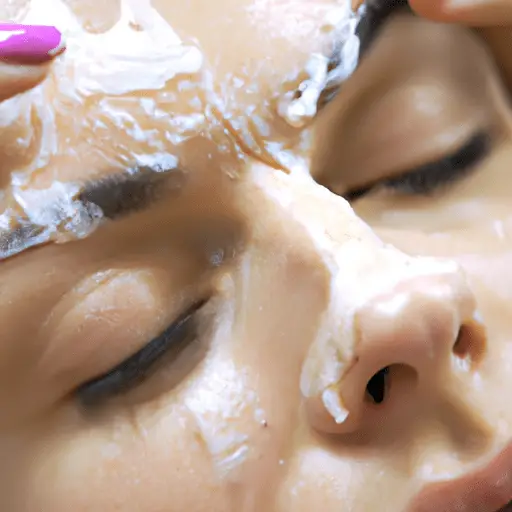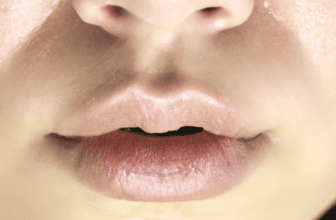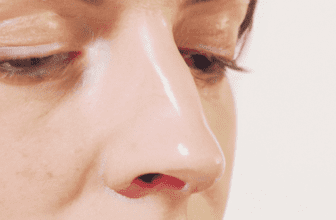Chemical Exfoliation: A Gentle Approach to Smoother Skin
-
Table of Contents
- Chemical Exfoliation: A Gentle Approach to Smoother Skin
- Key Takeaways
- Unveiling the Power of Chemical Exfoliation
- The Science Behind Chemical Exfoliation
- Benefits of Chemical Exfoliation
- Dermatologist-Approved Products for Chemical Exfoliation
- FAQ Section
- 1. How often should I use chemical exfoliants?
- 2. Can I use chemical exfoliants if I have sensitive skin?
- 3. Can I use chemical exfoliants with other skincare products?
- 4. What should I do if my skin reacts negatively to a chemical exfoliant?
- 5. Can I use chemical exfoliants in the morning?
- Conclusion: The Gentle Power of Chemical Exfoliation
- Key Takeaways
Chemical Exfoliation: A Gentle Approach to Smoother Skin

[youtubomatic_search]
Key Takeaways
- Chemical exfoliation is a skincare routine that uses acids or enzymes to remove dead skin cells, revealing a smoother and brighter complexion.
- It is a gentler alternative to physical exfoliation, which can cause micro-tears in the skin.
- Chemical exfoliants come in various forms, including cleansers, toners, serums, and peels, and are categorized into AHAs, BHAs, and PHAs.
- Regular use of chemical exfoliants can improve skin texture, reduce signs of aging, and help with acne and hyperpigmentation.
- It’s essential to use sunscreen after chemical exfoliation as it can make the skin more sensitive to the sun.
Unveiling the Power of Chemical Exfoliation
Chemical exfoliation, a term that might sound intimidating to many, is a skincare routine that has been gaining popularity for its gentle yet effective approach to achieving smoother skin. Unlike physical exfoliation, which uses abrasive materials to scrub off dead skin cells, chemical exfoliation employs acids or enzymes to dissolve the bonds between skin cells, allowing them to shed naturally. This process reveals a smoother, brighter, and more youthful complexion underneath.
The Science Behind Chemical Exfoliation
Chemical exfoliants work by breaking down the ‘glue’ that holds dead skin cells together. They come in various forms, including cleansers, toners, serums, and peels, and are categorized into three types: Alpha Hydroxy Acids (AHAs), Beta Hydroxy Acids (BHAs), and Polyhydroxy Acids (PHAs).
AHAs, such as glycolic and lactic acids, are water-soluble and work on the skin’s surface. They are effective in reducing signs of aging, such as fine lines and sun damage. BHAs, like salicylic acid, are oil-soluble, penetrating deeper into the pores to remove excess sebum and dead skin cells, making them ideal for acne-prone and oily skin. PHAs, including gluconolactone and lactobionic acid, have larger molecular structures, making them less irritating and suitable for sensitive skin.
Benefits of Chemical Exfoliation
Regular use of chemical exfoliants can bring about a host of benefits. According to a study published in the Journal of Dermatological Science, chemical exfoliation can improve skin texture, reduce signs of aging, and help with acne and hyperpigmentation. It can also enhance the absorption of other skincare products, making them more effective.
However, it’s essential to note that chemical exfoliation can make the skin more sensitive to the sun. Therefore, it’s crucial to use sunscreen after exfoliating to protect the skin from harmful UV rays.
Dermatologist-Approved Products for Chemical Exfoliation
There are numerous dermatologist-approved products available for chemical exfoliation. For instance, Dr. Dennis Gross Alpha Beta Universal Daily Peel combines both AHAs and BHAs to exfoliate and smooth the skin. Paula’s Choice Skin Perfecting 2% BHA Liquid Exfoliant is another popular choice, known for its ability to unclog pores and reduce redness.
FAQ Section
1. How often should I use chemical exfoliants?
It depends on your skin type and the product’s strength. Generally, it’s safe to start with once or twice a week and adjust based on how your skin responds.
2. Can I use chemical exfoliants if I have sensitive skin?
Yes, but it’s best to start with PHAs, which are gentler on the skin. Always do a patch test first to see how your skin reacts.
3. Can I use chemical exfoliants with other skincare products?
Yes, but avoid using them with other active ingredients like retinol to prevent skin irritation.
4. What should I do if my skin reacts negatively to a chemical exfoliant?
Stop using the product immediately and consult a dermatologist. You may be using a product that’s too strong for your skin, or you may be allergic to one of the ingredients.
5. Can I use chemical exfoliants in the morning?
Yes, but make sure to apply sunscreen afterwards as chemical exfoliants can make your skin more sensitive to the sun.
Conclusion: The Gentle Power of Chemical Exfoliation
In conclusion, chemical exfoliation is a gentle and effective approach to achieving smoother and brighter skin. By breaking down the bonds between dead skin cells, it allows them to shed naturally, revealing a more youthful complexion underneath. With regular use, it can improve skin texture, reduce signs of aging, and help with acne and hyperpigmentation. However, it’s essential to use sunscreen after exfoliating to protect the skin from harmful UV rays.
Key Takeaways
- Chemical exfoliation is a skincare routine that uses acids or enzymes to remove dead skin cells, revealing a smoother and brighter complexion.
- It is a gentler alternative to physical exfoliation, which can cause micro-tears in the skin.
- Chemical exfoliants come in various forms, including cleansers, toners, serums, and peels, and are categorized into AHAs, BHAs, and PHAs.
- Regular use of chemical exfoliants can improve skin texture, reduce signs of aging, and help with acne and hyperpigmentation.
- It’s essential to use sunscreen after chemical exfoliation as it can make the skin more sensitive to the sun.
[youtubomatic_search]





